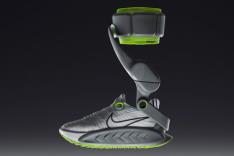Marathon Recovery Rule 3: Invest in Your Recovery
The next step you should consider following the marathon is to invest a little money in yourself. Visit an Active Release Technique (ART) therapist. Why? Because in the final miles of a well-run marathon, there is undoubtedly a breakdown in your biomechanics, and that breakdown means that you're asking more of one muscle group or more of one side of your body than the other. Simply put, you're likely asymmetric when you finish the marathon, and you need someone who can help you gain back that symmetry and take care of any little injuries you may have incurred during the race.
How do you find an ART therapist? Search for a physical therapist, chiropractor or even a highly trained massage therapist in your area; the key is that they've taken the time to broaden their knowledge base and get an ART certification.
More: How Sports Chiropractors Prevent Injuries in Runners
When athletes are worked on by an ART therapist, their minor injuries or "niggles" tend to go away after one or two sessions. Now, I know what you're thinking. This will cost money and that money could be spent on a new pair of shoes. But, when you consider the money and time spent seeing an ART therapist, it's a small fraction of what you spent on your marathon registration, traveling to the marathon, lodging and meals. Plus, most good ART therapists will give you a small list of strengthening exercises you can do to strengthen your minor muscles, or improve symmetry. So find a good therapist and invest some money in yourself so that when you resume training you're 100 percent healthy, and ready to train at a new level.
More: How Myofascial Release Can Prevent Injury
Marathon Recovery Rule 4: Cross-Train Before You Resume Running
Recovery from a marathon has long been thought of as: Take X number of days off, then start running again. But, a new model for marathon recovery values the healing power of getting oxygen-rich blood to damaged muscle tissue. One way to do this is to swim or aqua jog. Both are good because you simply move some blood around the body, and speed up the healing time of the cellular damage that occurred in your leg muscles during the race.
More: Why Pool Running Is Great for Recovery
Also, there is some benefit to being in water for the lymph system, as the hydrostatic pressure of the water gives your lymph system a gentle massage that helps flush out the toxins and waste products you might be holding onto post-marathon. Biking, cross-training on the elliptical and hiking are good choices, too—all three of these activities meet the criteria of getting blood to your damaged muscles.
More: An Injury-Free Approach to Cross-Training
So when do you start running? That's very much up to you. For many of you, the thought of going two or three weeks without running is hard to imagine, yet many elite distance runners take a long break after a marathon. This is a great time to cross-train, which could include activities as gentle as a brisk walk or a hike. The key here is that you should give your body some time to realign and heal from the stress of a marathon.
Marathon Recovery Rule 5: Get Stronger Before You Start Training Again
The good news: You have time to do some serious, focused non-running ancillary work at this time. I refer to this as General Strength and Mobility (GSM) and, in the days following the marathon, it's a great time to complete this type of work.
More: How GSM Can Make You a Better Runner
Post-marathon GSM practice proves beneficial because every runner has weaknesses, often with their minor muscle groups, and this work helps strengthen those areas. Use the lunge matrix warm-up and the myrtl routine before and after cross-training. When you return to running, keep these elements as part of your training, and you'll be that much closer to running injury-free.
More: The 5 Best Core Exercises for Runners
Remember, the reason to do GSM work is to stay injury-free, which will allow you to run more miles and more intense workouts. This work can be a bit boring and definitely is not as enjoyable as a nice run with friends. But if you want to improve as a runner, then you need to improve your basal level of general strength, and you need to improve your hip and ankle mobility. Think of this work as an insurance policy again injury for your next block of serious run training.
Racing a marathon is a huge accomplishment, and you should be proud to finish. But you should also take the steps following the marathon to ensure that your next phase of serious run training goes well. Invest in yourself with everything from a contrast bath to a couple of ART sessions to daily GSM work. If you do these things, you'll be ready to run even faster the next time you toe the line.
More: 4 Valuable Marathon Lessons
 Sign up for your next marathon.
Sign up for your next marathon.- 2
- of
- 2
About the Author

Get ACTIVE on the Go


Couch to 5K®
The best way to get new runners off the couch and across the finish line of their first 5K.
Available for iOS | Android







Discuss This Article